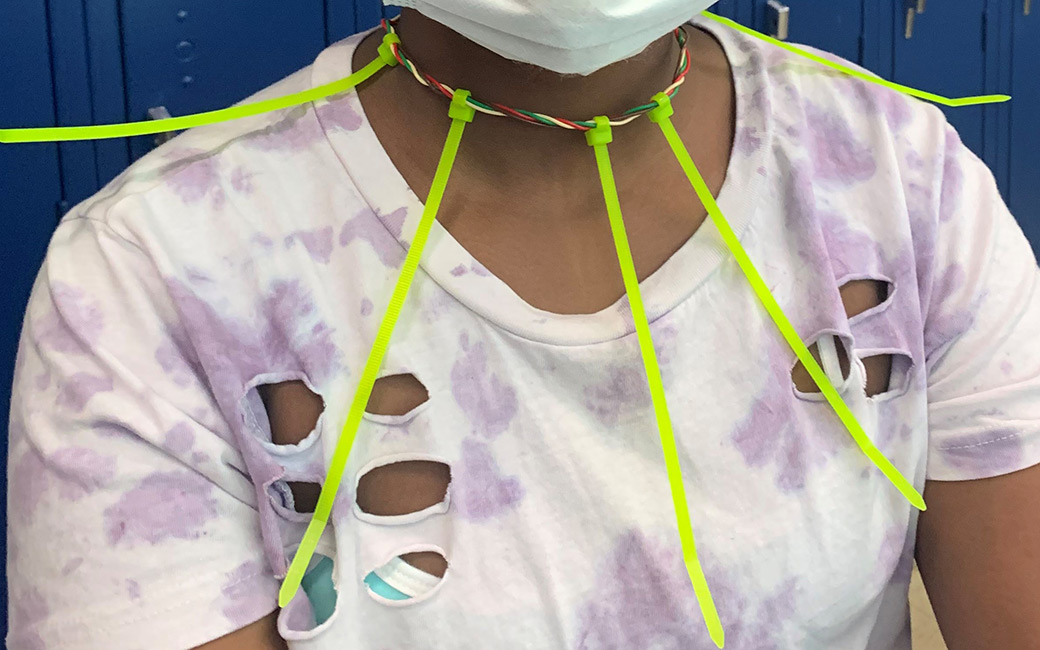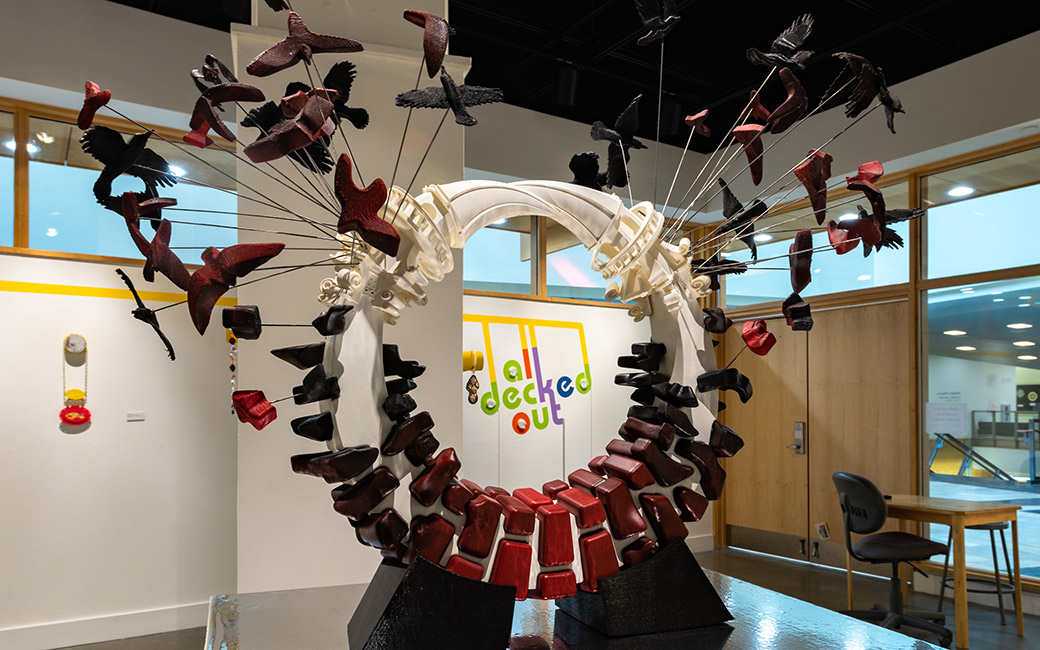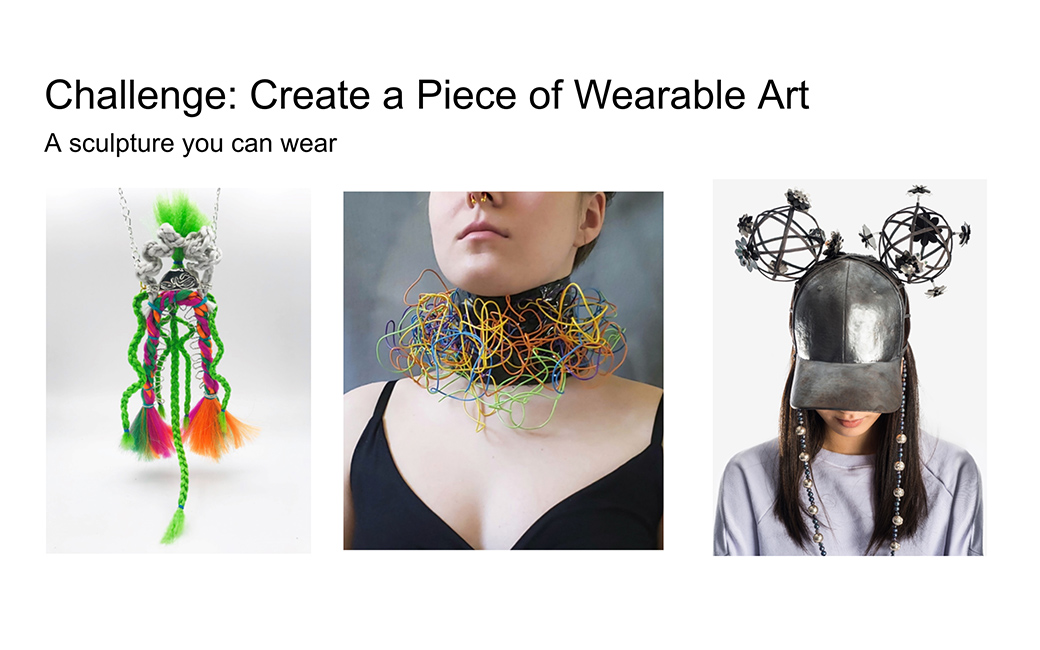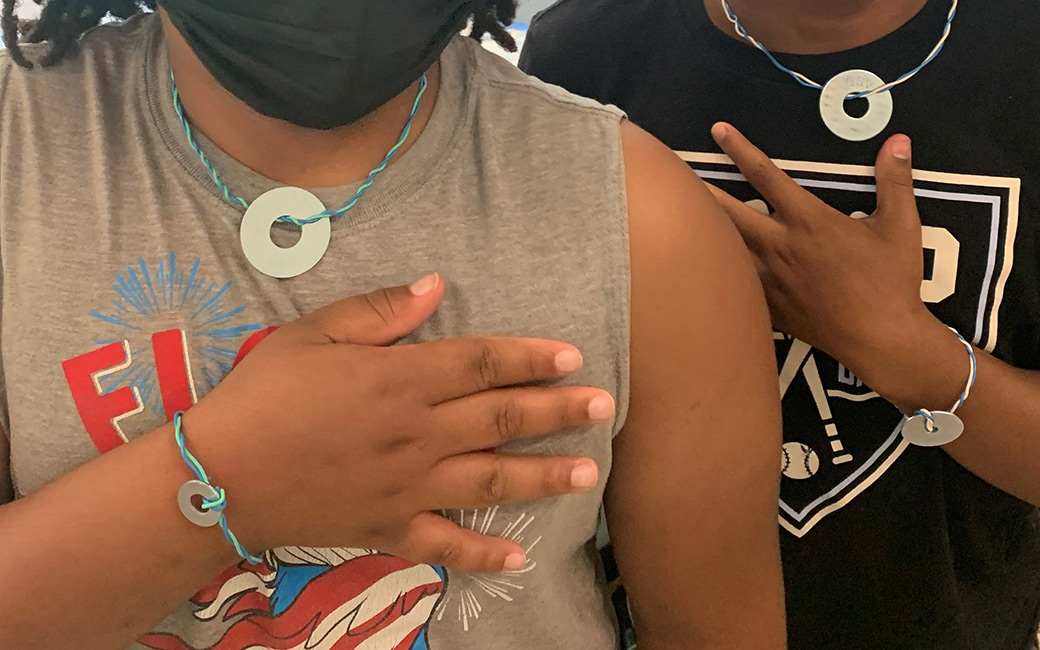
BCPS students virtually visit TU galleries
TU pilot program offers Scotts Branch Elementary students first “field trip” of the school year
By Rebecca Kirkman on June 15, 2021

Last week, fourth graders at Scotts Branch Elementary in Windsor Mill, Maryland, went on their first “field trip” of the school year—a virtual tour of “All Decked Out,” an exhibition co-curated by J. Susan Isaacs and Luci Jockel centered around what it means to adorn the body, which appeared in the Towson University Holtzman MFA Gallery in fall 2020.
Reaching 110 students across two hybrid class sessions, the experience started with a virtual tour of the gallery exhibition by Erin Lehman, director of the Holtzman and Center for the Arts galleries. Next, students designed their own wearable art in a workshop guided by TU Community Art Center Director Stacy Arnold.
During the virtual gallery tour, Lehman prompted the students to push the boundaries of what they consider jewelry, using examples of works in the exhibition, like “Croctempo” (2020), a multimedia piece by Nicole Dest that combines elements from pairs of Crocs and Nikes with other decorative materials including fur.
“Jewelry is an artwork we have on us all the time that tells a story about ourselves,” she explained to the students. By the end of the tour, the students’ conversation and ideas about jewelry and wearable art expanded from items like diamonds and rings to other items worn on the body, like face masks and prosthetic limbs.
By the end of Arnold’s workshop, students showed off their creations, including cuffs made of aluminum foil and jangly bracelets adorned with metal washers.
The program builds on the TU Community Art Center’s mission to “serve the Baltimore community with arts programming while at the same time advance the educational opportunities of Towson students,” Arnold explains. The virtual field trip expands TU’s community art programming with more options for schools, from in-person gallery visits and workshops to fully virtual and hybrid tours and workshops.

The program aligns with existing Baltimore County Public Schools (BCPS) curriculum, and a grant from the Baltimore County Commission on Arts and Sciences covered the cost of the materials in the kits, making it an appealing no-cost program for Scotts Branch students during the novel coronavirus pandemic when traditional field trips weren’t an option.
Andrew Kelley ’19, a first-year visual arts teacher, jumped at the chance to bring the virtual field trip pilot program to his classroom.
As a TU student majoring in art and design, Kelley worked as a student teacher in the TU Community Art Center and developed a mentorship with Arnold that has continued since his graduation.
“I'm big on giving my students every opportunity and reaching out to see what else is out there,” Kelley says. “Being a pandemic year, it was hard to do anything like this, so when Stacy was talking with me about the virtual field trip, I said, ‘Why don't we run it at my school?’”
As a Title 1 BCPS school, more than half of the students at Scotts Branch Elementary are experiencing poverty. In addition to offering students a field trip experience, Kelley says working with Towson University gives his students an early exposure to higher education.
“A lot of our students don’t come from the most affluent families,” he says. “Thinking about universities in general isn’t always on the table. But being aware that Towson is there, that you can go visit this gallery and knowing that some place like that isn’t meant to be ostracizing, but can be embraced, is a big deal.”
In the future, Arnold and Lehman plan to expand the program to additional BCPS schools and grade levels, with TU students trained to lead the workshops.
In the fall, Arnold will launch a creative movement-focused virtual field trip program for kindergarteners, inspired by the “All Night Party” gallery exhibition, in partnership with the TU Community Dance Center Director Candice Webster.
Arnold sees the pilot program as one of several silver linings to come out of challenges caused by the pandemic.
“Challenges are where really interesting, creative things happen,” she says. “When TU students get involved, these challenges are magical opportunities. Opportunities to think about the community and how to step into their shoes. And the opportunity for empathy, to see things from their eyes, their world. No matter what we do, relationships come first. Content second. Technology third.”
